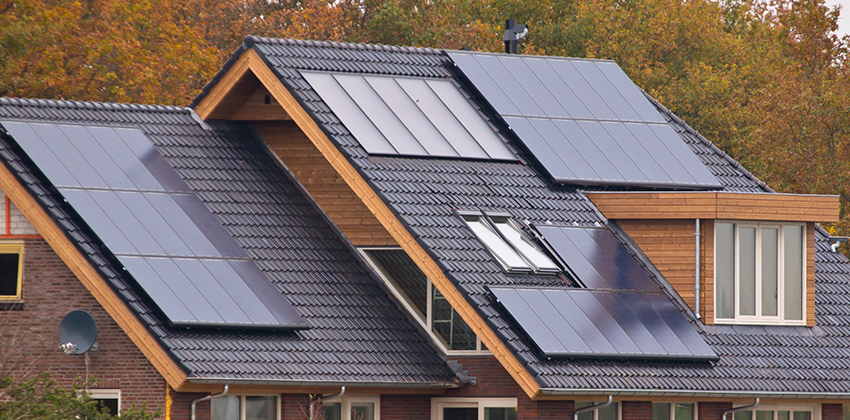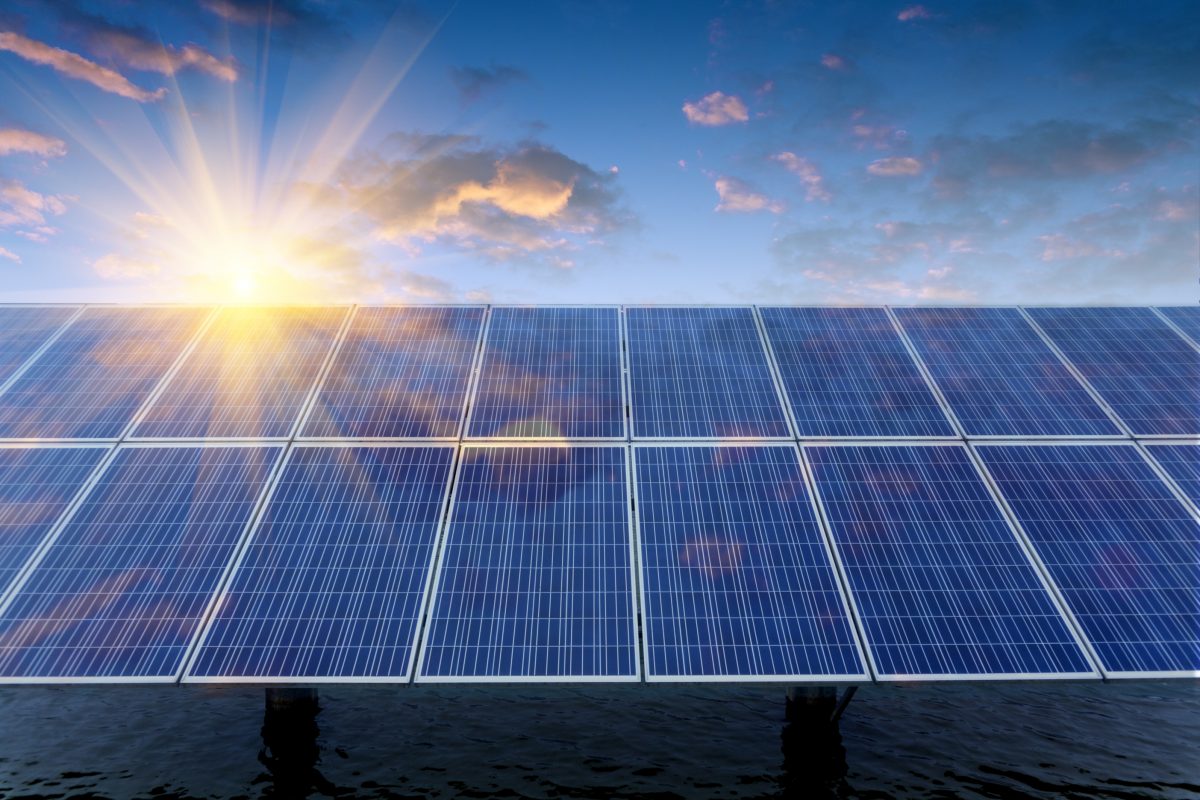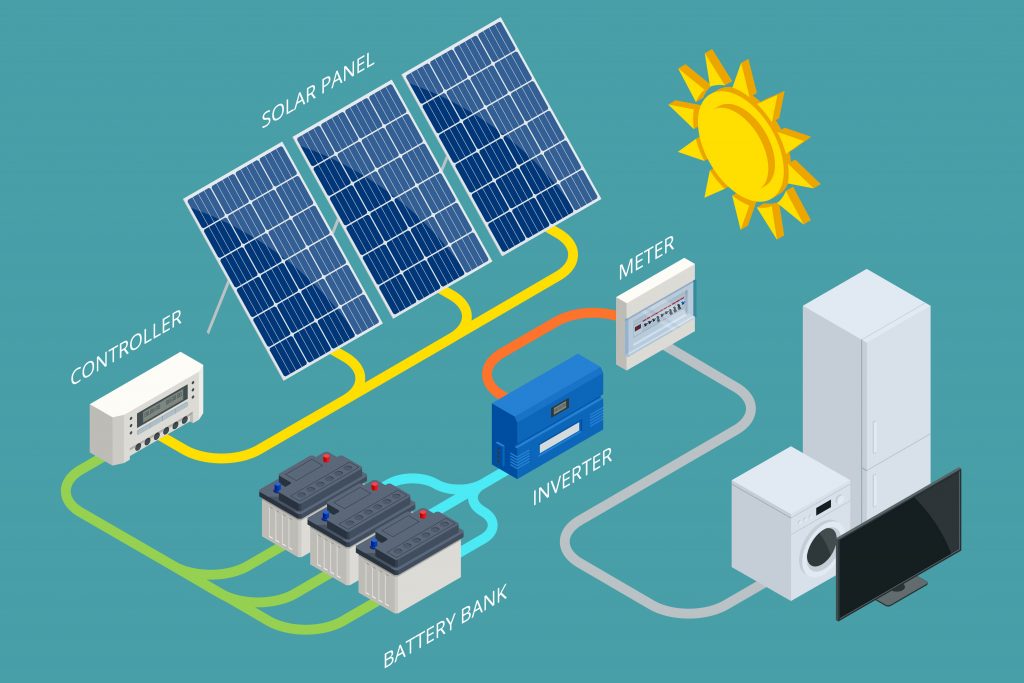The advantages of polycrystalline solar panels lie in their low production cost, typically ranging from $0.2 to $0.3 per watt, making them suitable for large-scale applications. The energy conversion efficiency is stable, usually between 16% and 18%, with high-efficiency products reaching up to 19.5%. Silicon is abundant, accounting for 27.7% of the earth’s crust, and is easy to obtain. Their high-temperature performance is excellent, with efficiency dropping only by 0.45% for every 1°C increase. The production process is environmentally friendly, with an energy payback period of 1.5 to 2 years, and they can generate 25 to 30 times the amount of energy over their lifecycle.
The production cost of polycrystalline solar panels is 20%-30% lower than monocrystalline panels, due to the relatively simple manufacturing process and less stringent control of crystal structures. Polycrystalline production mainly involves melting silicon materials and allowing them to cool and crystallize, whereas monocrystalline requires precise temperature control and growth conditions, leading to higher costs. In the global market, the average cost per watt for polycrystalline solar panels is between $0.2 and $0.3, compared to $0.4 per watt for monocrystalline, reducing overall production costs and making them ideal for cost control and large-scale deployment in solar power stations.
In addition, polycrystalline solar panel production equipment is mature, and the manufacturing process is highly standardized, making the production process more efficient. According to statistics from the International Energy Agency (IEA), global polycrystalline production capacity has grown by more than 15% annually over the past five years, and it is expected that global annual production capacity of polycrystalline solar panels will exceed 300 GW by 2025. This high capacity and stable supply chain further enhance its cost advantage, helping countries significantly reduce project budgets while promoting renewable energy applications.
Although the energy conversion efficiency of polycrystalline solar panels is slightly lower than monocrystalline, its stability is sufficient to meet the needs of solar projects. According to data from the International Photovoltaic Technology Association (IPVTA), the average energy conversion efficiency of polycrystalline solar panels is between 16% and 18%, with some high-efficiency products reaching up to 19.5%. For example, in a solar power plant with an installed capacity of 100 MW, using polycrystalline solar panels, the annual power generation can reach 16 million kWh, enough to meet the annual electricity demand of about 50,000 households. Such a large-scale power station requires a high energy conversion efficiency, and the stable output of polycrystalline solar panels makes it an ideal technical choice.
In high-temperature or harsh weather conditions, the performance of polycrystalline solar panels declines slightly. Studies show that the temperature coefficient of conventional polycrystalline panels is about -0.45%/°C, which is lower than many other solar technologies. This means that even in hot summer conditions, the drop in panel output power is relatively small. For example, a 100 kW solar power plant in tropical India can achieve more than 90% of its peak power output, ensuring long-term stability in energy generation efficiency.
The silicon used in polycrystalline solar panels is one of the most abundant elements in the earth’s crust, accounting for about 27.7% of its total mass. Silicon resources are easy to extract, mainly from quartz sand or silicon dioxide ores, and after purification and smelting, high-purity silicon is produced at a relatively low cost. According to global silicon market statistics, global polycrystalline silicon production reached 600,000 tons in 2023, enough to support 400 GW of solar power capacity, providing the solar industry with abundant resource support. In contrast, rare metals like indium and tellurium, used in thin-film panels, have limited global reserves and are prone to supply chain bottlenecks, making the material advantages of polycrystalline silicon even more significant.</span></p>
<p class="md-end-block md-p"><span class="md-plain">Moreover, the raw materials of polycrystalline panels have a high recycling rate. According to the European Photovoltaic Industry Association (EPIA), the recycling rate of polycrystalline materials is as high as 85%-90%. After the panel reaches the end of its lifespan, its silicon materials can be recycled and reused, further reducing environmental impact. Silicon materials are not only abundant, but their recyclability also ensures the sustainable development of the photovoltaic industry.
Polycrystalline solar panels perform well in high-temperature environments. Studies show that polycrystalline panels have a temperature coefficient of about -0.45%/°C, meaning that for every 1°C rise in temperature, the panel’s power output decreases by only 0.45%. Compared to monocrystalline panels, polycrystalline panels experience less power degradation in high-temperature environments. For example, in the Middle East and North Africa, where high temperatures are common, the annual power efficiency decline of polycrystalline panels is less than 5%, significantly outperforming monocrystalline panels in similar environments. As a result, polycrystalline panels have become the first choice for many solar projects in tropical and desert regions.</span></p>
<p class="md-end-block md-p"><span class="md-plain">Several experimental projects have shown that when temperatures exceed 40°C, the power output of polycrystalline panels only decreases by 5%-10%. A 300 MW solar power plant in Saudi Arabia, using polycrystalline panels, has been able to maintain more than 90% of its full-load power output under high-temperature conditions, providing stable electricity to the local grid. This excellent high-temperature adaptability has led to the widespread use of polycrystalline panels in solar power projects in tropical and desert regions around the world.
Polycrystalline solar panels have relatively low energy consumption during production, typically consuming about 6 kWh per watt produced, 15%-20% less than monocrystalline panels. According to analysis by the International Renewable Energy Agency (IRENA), the carbon dioxide emissions from polycrystalline panels are about 500 tons per megawatt, much lower than traditional fossil fuel power generation, which can emit up to 800 to 1,000 tons. By analyzing the entire production and use cycle, the energy payback period for polycrystalline panels is about 1.5 to 2 years, which is much shorter than their 25 to 30-year lifespan.
More importantly, polycrystalline panels have a high recycling rate at the end of their life cycle, and the environmental pollution generated during recycling is minimal. According to the Photovoltaic Recycling Research Center (PV Cycle), the recycling rate of polycrystalline panels can reach more than 85%, and the process of material reuse is relatively simple. Therefore, polycrystalline panels not only reduce the environmental burden during production but also further reduce the carbon footprint of the solar industry through recycling at the end of their life cycle.
Due to their low cost and stable performance, polycrystalline panels have become the mainstream technology for global solar power stations and distributed energy systems. For example, in China in 2023, the country’s newly installed solar capacity reached 98.5 GW, with more than 70% of the projects using polycrystalline panels. In Qinghai Province, China, the Golmud solar power station, with an installed capacity of 2.5 GW, can generate 4 billion kWh of electricity annually, enough to meet the annual electricity demand of more than 1 million households. The widespread use of polycrystalline panels not only promotes China’s clean energy development but also significantly reduces the overall investment cost of power station construction.
Similar projects are also being promoted in emerging markets such as India and Brazil. India’s Karnataka state built a 300 MW solar power station in 2022 using polycrystalline panels, generating more than 60 million kWh of electricity annually and successfully meeting the electricity needs of 500,000 residents. These projects demonstrate that polycrystalline panels perform excellently in terms of cost-effectiveness and sustainability in large-scale projects, driving the rapid global development of clean energy.



